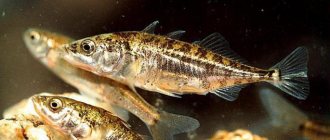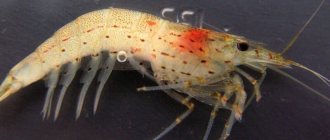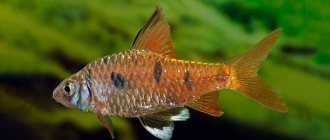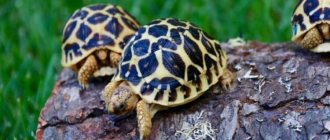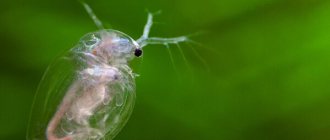Bearded dragon. Estersinhache fotografía/Getty Images
Today there are about 5,000 species of lizards on the planet ().
This group of reptiles includes tiny species such as the dwarf gecko, which can fit on the tip of a finger, as well as much larger species such as the 3-meter Komodo dragon. Most species of lizards eat insects, although some also eat plants, and the largest ones eat small mammals. Although lizards are popular pets, you probably already know that not all species make good housemates. Some species are poisonous, and many require difficult living conditions.
If you're looking for a pet lizard, it's important to choose from a group that is friendly, fun to watch, and (at least moderately) easy to care for. Here are some of our favorite lizard species to keep at home.
Features of the exterior and interior structure.
As many species of lizards exist on earth, so do their external characteristics. Unlike their descendants, snakes, lizards have limbs. Most lizard species have vocal cords that enable them to produce loud sounds.
Lizards' teeth are designed to capture or tear food. The tongue comes in different shapes and lengths, depending on the type of lizard. The brain is better developed in comparison with amphibians and fish, although it is small in size.
Lizards' ears perform not only the function of hearing, but also help maintain balance. Many species can discard their tail in case of danger; the discarded tail grows back, but has a darker color.
Masks
A monotypic family found in the West Indies and Florida. They are able to curl their tail into a spiral. They got their name from the wide black stripe that runs from the nose through the eyes. The most typical of this family is the common masked iguana, which lives in Haiti.
Nutrition
The majority of lizards are carnivorous. Their diet directly depends on their size. Species of small lizards and medium-sized reptiles eat insects and shellfish.
Large lizards can attack and eat other reptiles, small animals and birds, and also eat eggs. The largest existing lizard, the Komodo dragon, is able to attack even large animals.
Several species of lizards prefer plant foods and feed on leaves, fruits and flowers of plants.
Also among this type of reptile there are omnivorous representatives. They can consume both animal and plant foods as food.
The reason lizards are basically carnivores is that cold-blooded animals require higher-calorie foods, which provide the lizard with more energy.
Venomous teeth
Poisonous species of lizards , two of them are currently known - Arizona and Mexican. They have a dense, ridged body, a short tail with reserves of fat and a flat head. Paws are five-fingered with sharp long claws. The coloring, like many dangerous creatures, is warning.
Variegated, with bright yellow-red spots on a dark background. They prefer rocky desert areas, but do not like extreme dryness. But they love to swim, and row with their paws like oars. In winter they hibernate. Usually slow, but develop good speed in water.
They love bird and turtle eggs, although they feed on all living things. They search for prey using their tongue, which is constantly protruding and vibrating. The venom from the bite is not fatal, but it brings very unpleasant sensations - swelling, enlarged lymph nodes, difficulty breathing, dizziness and weakness. In addition, the wound may become infected. But they themselves do not attack people. Typically, bites occur during capture or after poor conditions in captivity.
Gecko-like
This infraorder differs from other lizards in its set of chromosomes and a special muscle located in the ear area. The scaly body has a sandy, brown, beige or green color.
The period of activity occurs at night. They have the ability to communicate with each other using sounds. They prefer to settle in deserts, mountain forests and gorges.
Reproduction
The number of litters per year is determined by the size of the animal. The largest species of lizards are able to reproduce no more than once a year. Small varieties mate 3 to 6 times per season.
During the mating season, males often engage in combat with rivals. If they differ in size, then the smaller specimen leaves the battlefield without a fight. However, if the forces are equal, the battle can turn out to be quite bloody. In this case, the female goes to the winner.
Small reptiles are capable of laying up to 20 eggs at a time. Large lizards lay 3-5 pieces. It is noteworthy that in some species the sex ratio is disturbed, but the lizards do not disappear. Females carry out laying without any participation of males. Scientists call this parthenogenesis. In addition, there are also types of lizards that reproduce through viviparity.
Masonry is usually carried out in the ground, sand and under stones. Lizards often lay eggs in abandoned rodent burrows. Egg maturation lasts up to one and a half months. An interesting fact is that immediately after birth, lizards lead an independent life, without the participation of their mother. She loses all interest in them immediately after their birth.
In viviparous varieties of these reptiles, pregnancy lasts 3 months. The gestation and birth of babies, as a rule, occurs during the cold season.
Skinks
Distributed throughout the globe in zones with temperate, tropical and subtropical climates. They live in a variety of environments, from deserts to moist forests. The difference is smooth scales, similar to fish.
The lizard's diet is very varied. They feed on both plant and animal foods. They can eat carrion. They are oviparous and viviparous. Only some species of skinks are characterized by caring for their offspring.
Vermiformes
This squad is the most unusual. Many people often mistakenly classify snakes as this because they look like this type of lizard. However, this is not the case. These reptiles are similar to snakes in that they have no limbs and have an elongated body shape. But the general features are limited to this. Worm-like lizards also do not have eyes or ears. Therefore, this reptile resembles not a snake, but a worm. These reptiles live in the United States.
Monitor lizards
The individual with the maximum recorded length reached three meters. The smallest representative is only 28 centimeters long. The habitat is Africa, Asia and Australia. They live in a wide variety of places, from deserts to rain forests.
Monitor lizards are predators and feed on a variety of animals. Many species can eat relatives. The lizard's tail is powerful enough to knock down a medium-sized animal.
Corytophanidae
They live in central North and northern South America. They are called helmet or casque-headed for the special structure of the head and for the ridge that goes to the tail. There are several basilisks among them. It is unknown why they were named after a mythical creature with a freezing gaze.
Perhaps for the ability to look for a long time without blinking. Or maybe for the ability to run on water, quickly moving its paws. At the same time, they can reach speeds of up to 12 km/h. The remaining families in this infraorder also live in America. The next infraorder - Gecko-like - contains 7 families.
Chameleon
A lizard capable of changing color depending on its environment. In the wild, the ability is used as camouflage. The length can exceed 50 centimeters.
The smallest representatives are only 3-5 centimeters long. For home conditions, the most common are Yemen chameleons.
Agamidae
These are medium-sized diurnal lizards, and there are also very small individuals. They live on the ground, in trees, in burrows, in water, and some even fly. They live in Eurasia, Australia and Africa. They live everywhere except very cold areas. Let's look at some species from this family.
- Spinytails chose the northern part of Africa, the Near and Middle East, parts of India and Pakistan. They have a voluminous, wide body up to 75 cm in size. The head has a flattened appearance, the tail is thick and not long, all covered with tuberous spines, for which they got their name. The color is camouflage, the color of dark sand or alumina. A total of 15 species are known.
- Australia and New Guinea are home to Amphibolurinae , all local names of which include the word “dragon” - crested dragon, tropical, forest, bearded (their lower jaw turns black after stress, taking on the appearance of a beard), earless, etc. Most likely, their exotic appearance provoked such nicknames.
Many of them are decorated with spines, and the frilled lizard (Chlamydosaurus) , for example, has a completely menacing appearance. Her head is surrounded by a large fold of skin in the form of a collar, and she raises it like a sail if she is excited. It is about a meter in size, has a fiery terracotta color, and has sharp teeth and claws. All together this creates an eerie impression.
- Moloch, the “prickly devil” (Moloch), looks no less exotic The name itself, in honor of a greedy pagan deity demanding human sacrifices, suggests that this specimen looks frightening. Its entire body is covered with curved spines, and above the eyes these growths look like horns. And he, like a chameleon, can change color. But not as a disguise, but based on my mood and well-being. Only the body size lets us down, it is about 22 cm.
- Water dragons (Phusignathus) stand apart from others They do not live in Australia, but in Southeast Asia, Thailand, Cambodia, Vietnam and China. In Greek, their name means “swollen jaw,” and we know them as Chinese water dragons. They can stay under water for a long time and use their tail to swim. Many people keep these individuals at home.
The following people live in the Russian Federation:
- Caucasian agama (from the genus of Asian mountain), it is capable of inflating its body, huddled in a crack. And it’s impossible to get her out of there, because her whole body is tightly enveloped in small, rough scales.
- steppe agama . This baby, 12 cm long, usually has a camouflage color of gray-olive tones. But in extreme heat or after stress, it changes a lot. And here the gender difference is immediately visible. Males are a rich blue-black color, with azure markings on the back, only the tail takes on an egg yolk hue. And the females are the color of the sky or creamy greenish, with dark orange spots on the back.
- round-headed spinytail is a small lizard up to 14 cm with a tail. Lives in steppe and desert regions (Kazakhstan, Kalmykia, steppes of Stavropol, Astrakhan and Volgograd regions). Its muzzle has a sloping, streamlined shape, which is why it got its name. Very curious, pebbles and other inedible objects are often found in the stomach.
- The takyr roundhead is also an inhabitant of deserts. It has a flat and wide body, a short tail and spotted patterns in blue and pink tones. A distinctive feature is the vertical profile of the muzzle, the upper jaw almost vertically passes into the lip.
- the long-eared roundhead is our “beauty-beast”. In a calm state, it has a quite decent appearance - a patterned grayish-sand color and a not very long tail. But in case of danger, a metamorphosis occurs - it takes a threatening pose, tenses, spreads its legs, and puffs up. Then it opens its bright pink, toothy mouth, expanding it with protective folds, like large ears. An angry hiss and a curled tail complete the action, forcing the enemy to flee.
Gecko
Small and very peculiar lizards. Inhabitants of tropical and subtropical climates. The structural features of the gecko's paws help it move along any vertical surfaces and even along the ceiling. They are active mainly at night. They can make sounds.
Fusiformes
This infraorder includes 3 families, which include about 800 species. It is noteworthy that this type of reptile is also often confused with snakes. This is due to the peculiarity of the detachment. Some species of fusiformes have no limbs, which makes them look like snakes.
All representatives of this order have scales supported by small bone plates. This sets them apart from other orders of lizards. It is noteworthy that not all fusiform species are limbless.
Brittle spindle
This pseudo-legged lizard reaches half a meter in length, half of which is the tail. The color is mostly brown. There are spots and stripes on the belly. Can drop its tail when in danger.
Habitat: Europe and Central Asia, including the Russian Federation. Life expectancy in the natural environment is up to twelve years.
Iguanas
They live in America, as well as on the islands of Fiji, Galapagos and the Caribbean. Among them, true iguanas are recognized as the largest - up to 2 m in length. They are distinguished by pleurodont teeth, which grow on one side to the jaw bones. Interestingly, the lost tooth is soon replaced by a new one. Such capabilities are usually inherent in members of other families, but not agamas.
Viviparous lizard
It belongs to a species of lizard that is minimally susceptible to low temperatures, and therefore has an extremely wide area of residence - Northern, Central, Eastern Europe and Asia, right up to the Arctic Ocean.
The size does not exceed twenty centimeters. The tail is about ten centimeters long. The diet consists of small insects.
Monitor lizards
The largest of them, undoubtedly, is the famous Komodo dragon. The recorded maximum size of its body is 3.13 m. The smallest is the short-tailed Australian monitor lizard with a body length of up to 28 cm. Monitor lizards have a completely ossified skull, an elongated body, a neck, and a forked tongue.
They walk on almost straightened limbs. The head is covered with polygonal bony scutes. They live in Asia, Australia and Africa. They prefer a diurnal lifestyle, with the exception of a few species - dark, striped and Komodo monitor lizards.
The latter exhibited parthenogenesis (same-sex reproduction). That is, females can give birth without males, their eggs develop without fertilization. All monitor lizards are oviparous. Dibamia -1 family.
Vermiforms are earless, eyeless and legless creatures that live in the earth. They dig tunnels and are very similar to earthworms. They live in the forests of Indochina, New Guinea, the Philippines and Mexico. Superfamily Shinisauroidae with one family.
The crocodile shinisaurus lives in southern China and northern Vietnam. Body length is about 40 cm. Currently, domestic species of lizards are increasingly decorated with this species. Special methods for breeding it in a terrarium have been developed.
Fast lizard
The area of residence is the territory of Europe. Length – up to 35 centimeters. The color can be brown, green and gray, with a striped back.
Males have richer and brighter colors. They eat large insects. This type of lizard can eat its offspring. It is an endangered species and is listed in the Red Book.
Iguanas
This infraorder includes the families of iguanas, chameleons and agamidae. Most of the species included in this taxon have a spiny crest. It runs along their entire body, along their back and to the tip of their tail. In addition, there are two more distinctive features. There are growths on the head of this type of lizard. In addition, they also have throat sacs, which serve them to give signals when danger arises and during the mating season. The bulk of animals of this infraorder live in trees.
Some of the most popular representatives of these animals are the steppe agama and the Yemen chameleon. Among their relatives they are the largest in size. An adult chameleon can reach 60 centimeters in length, and an agama can reach thirty. A distinctive feature of these two types of reptiles is their ability to change body color. When threatened, the chameleon turns brown, merging with the tree trunks. It is noteworthy that, like the motley roundhead, its body can only be painted in dark colors. His body cannot accept bright shades. But this feature is inherent in the agama. At rest, the body of this animal is gray in color, and in case of danger or heating in the sun, it becomes covered with bright blue, yellow and black spots.
Natural enemies
Lizards have quite a few natural enemies. Most of them are predators, but there are also herbivores. Perhaps the main enemy of lizards are snakes, which consume them as food.
Collared
Inhabitants of North America. They do not have many typical features of the infraorder Iguanaiformes - a longitudinal ribbed stripe on the back, a throat pouch, a rostral shield, spines and growths, scales on the ears and fingers. Therefore, they were taken out of the iguana family, elevated to the rank of their own family. A distinctive feature is the presence of a colorful, bright collar.
Photos of lizards
general characteristics
Lizards are considered representatives of a separate evolutionary lineage, despite their close relationship with snakes. In fact, lizards are considered direct descendants of snakes, but this does not prevent them from being separated into a separate branch of development. Like snakes, lizards belong to the squamate order. At the same time, lizards are considered representatives of different evolutionary groups, despite the unification based on the presence of certain features of physiological development, for example, the possibility of losing limbs.
All lizards have movable eyelids and visible openings that represent ear canals. Most lizards have two pairs of limbs, but this does not always characterize all representatives included in this suborder. To determine whether reptiles can be classified as lizards, the internal structure of the body is usually assessed.
Most lizards have a rudimentary sternum and shoulder girdle, which is absent in snakes.
There is a wide variety of variations in the appearance of lizards. Their background color is directly related to the need to camouflage among the natural conditions of the landscape, which determines the presence of different options for the natural color of lizards. The most common are the varieties in which the color is green, gray, brown, or sand.
Lizards are characterized by the presence of various spots, stripes and stains, which can sometimes form bizarre geometric shapes. Some representatives of the species can change color based on the situation. Mimicry based on color changes is common among lizards.
Lizards can also have distinctive colors like the Tokay gecko.
The scales of lizards are located differently and depend on the species of reptile. Thus, the arrangement of scales can be overlapping, in the form of a tiled roof, end-to-end, etc. Often the scales are formed in the form of peculiar spikes. In some lizards, the scales acquire especially durable properties due to the osteoderm - bony plates located inside the horny scales.
Lizards' mouths are filled with teeth. In some reptiles, certain types of teeth are located near the palate. Pleurodont teeth are teeth that change periodically, which is why they are not fixed too firmly. Acrodont teeth are permanent; they are firmly located in the mouth due to the fact that they are fused with the bones. This type of teeth is characteristic of a small number of lizards.
The bristles are quite thin, thanks to which reptiles can freely stick to different surfaces, including fairly smooth ones.
The limbs of reptiles are formed in different ways: their structure depends on the natural living conditions. For example, lizards, which require the ability to quickly climb various surfaces, have tenacious fingers due to the presence of bristles on the pads.
The tongue of lizards also differs in shape and size. Moreover, in all representatives of the suborder it is quite flexible, mobile and freely protrudes from the mouth.
Some reptiles can even catch fish using the flexibility and strength of their tongue.
The main weapon of lizards, however, remains their teeth. With their help, they grab prey and cut it up. For example, a monitor lizard with its sharp teeth can actually cut its prey into pieces. In addition, the suborder of lizards also includes one poisonous representative, the venomtooth, which is capable of transmitting poison to the victim along with its bite, which ultimately helps them cope with the enemy.
Poll: Have you ever held lizards in your hands?
Yes, I did
62.5%
No, I didn't hold it
37.5%
Voted: 8
What kind of heart do reptiles have?
Like amphibians, most reptiles have a three-chambered heart, consisting of a ventricle and two atria. The ventricle is divided by an incomplete septum into two halves: upper and lower, and can be conditionally divided into three sections.
Interesting materials:
Is it possible to wear wedding rings without registering a marriage? Is it possible to wear wedding rings without painting? Can a man wear a jacket under a coat? Can I wear my old cross? Is it possible to exchange Yandex points for money? Is it possible to treat roses with copper sulfate? Can flowering strawberries be processed? Can a wedding ring be worn around the neck? Is it possible to formalize a transaction for the purchase and sale of an apartment in MFC? Is it possible to spray chrysanthemum?
Lifestyle, behavior
Lizards primarily lead a terrestrial lifestyle; they can burrow into the sand (roundheads), crawl onto bushes/trees and even live there, from time to time embarking on gliding flights. Geckos (not all) and agamas easily move along steep surfaces and often inhabit rocks.
Some species with an elongated body and the absence of eyes have adapted to existence in the soil, others, for example, the sea lizard, love water, so they live on the coasts and often refresh themselves in the sea.
Some reptiles are active during daylight hours, while others (usually with a slit-like pupil) are active at dusk and at night. Some people can change their color/brightness due to the dispersion or concentration of pigment in melanophores, special skin cells.
This is interesting! Many lizards have retained the parietal “third eye”, inherited from their ancestors: it is not capable of perceiving form, but distinguishes between darkness and light. The eye on the crown is sensitive to ultraviolet radiation and regulates hours of sun exposure and other forms of behavior.
Contrary to popular belief that most lizards are poisonous, only two closely related reptiles from the family of lizards have this ability - the escorpion (Heloderma horridum), which lives in Mexico, and the vest (Heloderma suspectum), which inhabits the southwestern United States. All lizards molt from time to time, renewing the outer layer of skin.
Popular representatives of cold-blooded animals
Reptiles have been very popular for a long time. There are many species of pet lizards. Most species do not require special care or expensive equipment. They live a long time and reproduce well if optimal conditions are created.
A beautiful terrarium in a house or apartment is no longer a luxury. It is increasingly used as a stylish addition to the interior. But before you get a reptile, you need to know which lizards you can keep at home.
A terrarium with lizards is increasingly used as a stylish addition to the interior.
Hemitheconyx
This is a rather beautiful reptile that looks like a gecko. The peak of activity occurs at night. Catches prey carefully from cover. Does not show any aggression towards humans. Hemiteconix is dark in color. Thanks to the moving eyelid, the look becomes very expressive. These lizards deftly climb any rough surface. Hemiteconixes are quite thermophilic, which must be taken into account when keeping them in a terrarium.
Hemiteconix is a beautiful reptile that looks like a gecko
Phelsuma
Currently, felsuma is increasingly appearing in home collections. These are diurnal reptiles, so it is possible to observe them throughout the day. There are no major difficulties in maintenance. They practically do not make contact with humans, which makes them less popular than hemiteconix. Instead of claws, they have suction cups, so the terrarium must be tightly closed so that the reptile does not escape.
It is very important to maintain optimal humidity. You also need to give special supplements containing vitamins and calcium. You must have an ultraviolet lamp.
Toki (Gekko gecko)
This is a large reptile with a rather bright color. It can seriously injure you, so you should wear thick gloves before handling it. If, nevertheless, he grabs onto the victim, then you need to drop a little table vinegar on his nose. They scream quite a lot. Currents are active at night, so they mostly scream at night. Despite these disadvantages of this species, they are considered pets, as they are very easy to care for.
Bananaeater (Rhacodactylus ciliatus)
The banana eater is rapidly gaining popularity among reptile lovers. Very fast and jumping. Because of this, it is also called “teleport”. It almost never sits on your hands, as the banana-eater is very shy. This species often sheds its tail, which then does not grow back. Easy to maintain. He loves fruits and sweet baby purees. In good conditions it can live up to twenty years.
Most species of lizards do not require special care or expensive equipment
Eublepharis Macularius
It is the most unpretentious domestic reptile. Natural color is black and yellow. But today, many lizards of this species have been bred with a variety of colors. A big advantage over other species is their life expectancy of up to thirty years. They get used to people well.
If the owner is absent for a long time, the leopard gecko can live without food for several weeks. There is no need to buy special expensive equipment. Leopard gecko is the most popular species of domestic lizard.
What to feed at home?
And many exotic species of lizards are very popular terrarium animals, among them the Yemen chameleon, bearded agama, true iguana and others. With proper care, lizards reproduce well and feel at ease. But if you decide to get a pet lizard, then you will be faced with the question of how to properly feed such an exotic pet.
Fortunately, the lizard is not whimsical in terms of food intake; in the warm season it needs to be fed three times a day, and in winter, due to the low activity of the lizard itself, it can be fed only twice a day. Well, mealworms, grasshoppers, spiders, fresh chicken eggs and pieces of raw meat are suitable food for the lizard. They say that lizards are very fond of a mixture of chopped boiled chicken, grated carrots and lettuce. It is also very important that the lizard always has fresh drinking water in its terrarium.


